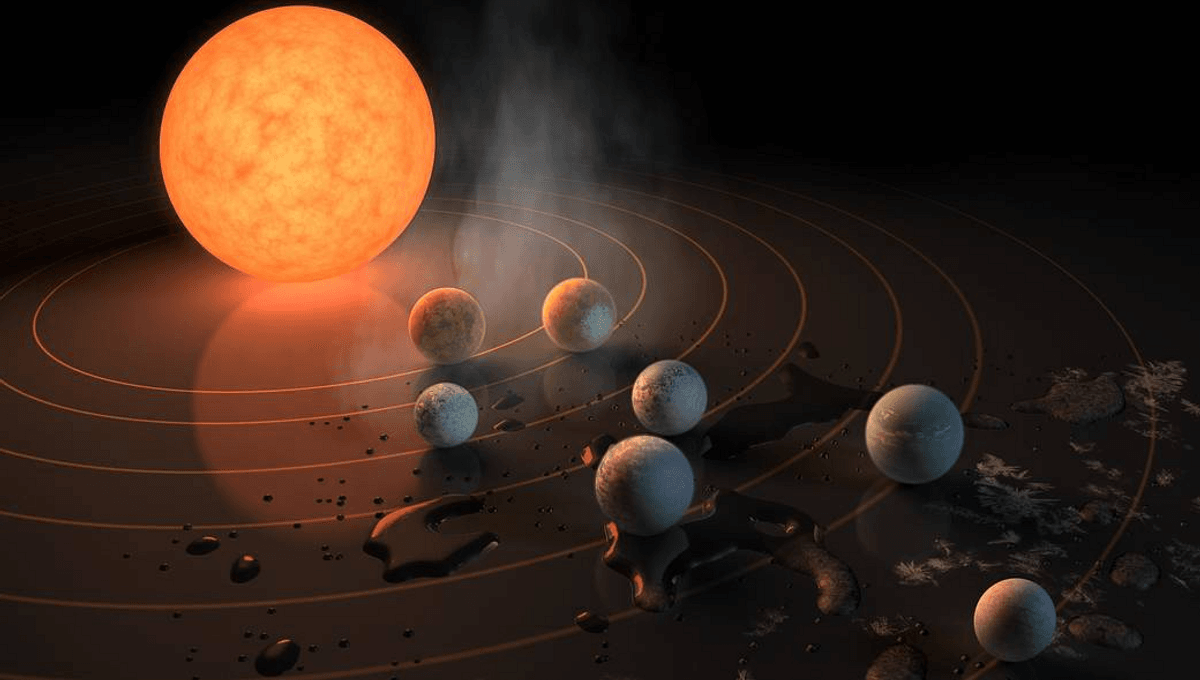
The JWST is capable of detecting gases such as ammonia, methane, and hydrogen cyanide in the atmospheres of planets orbiting nearby stars, a study to be published in The Astrophysical Journal concludes. The significance of these and seven other gases the authors considered is that they are what the paper calls “prebiosignatures” – indications of chemical conditions that could give rise to life.
Awesome as the JWST’s images have been, anyone who was hoping it would find signs of life outside the Solar System has so far been disappointed. There’s a fair bit of debate as to whether this is something the JWST could realistically do, or if we need to wait for a future generation of even more advanced telescopes.
University of Warwick PhD student Alastair Claringbold and co-authors took a different approach. Rather than looking for gasses such as methyl bromide, which are likely only to be produced in abundance by living organisms, they investigated the possibility of finding chemicals associated with prebiotic chemistry. Individually some of these might not mean much, but collectively they would indicate a world much like the Earth when life first appeared, and hopefully therefore capable of spawning life.
For added complexity, the team considered five types of Earth-like planets. These included a planet dominated by oceans, another rich in volcanoes, something close to an Earth twin, a rocky planet with mass considerably larger than Earth’s (“super-Earth”), and one that had just survived a major impact. In each case, they considered how abundant each molecule would need to be in the planets’ atmospheres for the JWST to be able to detect them.
Some combinations of planet type and molecule would be drastically easier than others. Hydrogen-rich atmospheres are “puffier”, assisting the detection of rare molecules in them, for example. Some gases produce more recognizable signatures than others. Formaldehyde could be detected on post-impact planets in concentrations of less than a part per billion, while some molecules would need almost 1 percent concentrations to be detected on certain planet types. Nevertheless, the authors consider many of the minimum concentrations they found to be realistic.
For example, they think five of these molecules could plausibly be detected around TRAPPIST-1e, assuming of course that unlike its neighbor, it has an atmosphere to detect.
Even if these molecules don’t turn out to signal life, many of them would be signs of other interesting things, such as the presence of lightning in a planet’s atmosphere.
The easiest (and indeed currently only realistic) way to detect chemicals like this is to wait until the planet passes in front of its star (transits) as seen from Earth. Light from the star will pass through the planet’s atmosphere, if it has one, and parts of the spectrum will be blocked. The wavelengths interfered with reveal the atmosphere’s composition.
To detect relatively rare molecules one transit will seldom be enough. Instead, the JWST would need to observe up to ten transits, combining the data to collect enough light and exclude disturbances such as stellar flares.
For a planet in an orbit as long as the Earth’s, that would take ten years, longer than the JWST’s anticipated lifespan. However, for planets orbiting red dwarfs, the habitable zone is much closer in, and transits come around far more frequently. If a suitable target is identified, the JWST can look at it when transits occur and collect the necessary data in a few hours of observing time over less than a year.
The full list of gases the authors claim the JWST could find this way, under plausible concentrations, is: “Hydrogen cyanide (HCN), hydrogen sulfide (H2S), cyanoacetylene (HC3N), ammonia (NH3), methane (CH4), acetylene (C2H2), sulfur dioxide (SO2), nitric oxide (NO), formaldehyde (CH2O), and carbon monoxide (CO).” Some of these have already been found on other worlds, such as HCN on Titan and the exoplanet GJ 1132b, but it is their combination that would be most significant, as well as their occurrence in the habitable zone.
The study has been accepted for publication in The Astrophysical Journal and is available as a preprint on ArXiv.org.
[H/T: Universe Today]
Source Link: JWST Is Capable Of Detecting Precursors Of Life Around Other Stars